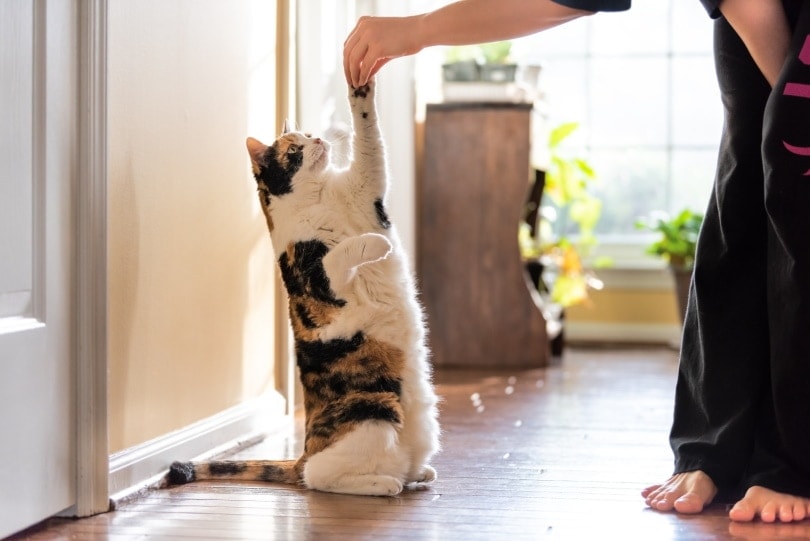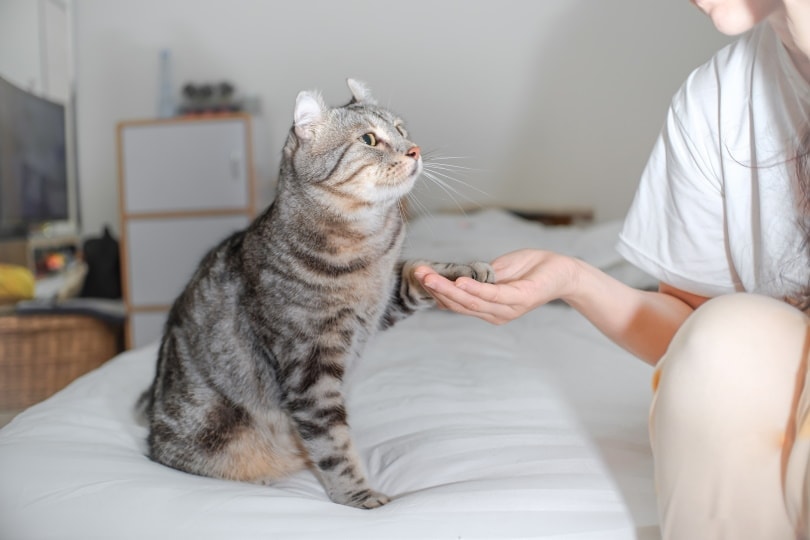Can Cats Be Trained Like Dogs? Helpful Tips & Advices
Updated on

Cats are curious creatures, just like dogs are. They can also be independent or needy depending on their personalities. Also like dogs, cats can be noisy when they want to get attention from their household members. So, can cats be trained like dogs can? The short answer to the question is yes — technically.
Cats can indeed be trained to do many of the things that dogs can be trained to do. However, these animals are quite different when it comes to accepting the training process. Owners should never expect cats to do all the things that they have seen their friends’ dogs do. However, patience and consistency can result in tremendous results that are sure to impress friends and family members.
Yes, Cats Can Be Trained, But Don’t Expect Then to Engage Like Dogs Do
While cats can be trained to do all kinds of cool things, you should not expect them to engage in training sessions or to respond to commands after training in the same way that dogs do. Most dogs aim to please their human companions, while cats don’t seem to care one way or the other.
Therefore, cats must be incentivized to train and learn new tricks and actions that you want them to. What kinds of things can cats learn through training?
- Come
- Sit
- Stay
- Go into a carrier or kennel
- Find items
- High five
- Jump through hoops
Kitties are intelligent animals that are able and willing to learn many different things when the time and place are right. What you teach your cat to do should depend on what you want them to do and their natural inclinations to do such things. For example, your kitty might naturally try to put their paw in your hand while interacting. This is a great sign that teaching them how to shake will be effective and successful.

Tips for Successful Cat Training Sessions
There are a few things that you can do to enhance the success rate of training sessions with your cat. First and foremost, you must find patience. Training will take time and may test your patience in ways that you are not used to. Don’t give up just because your cat isn’t responding after the first few training sessions.
Practice makes perfect, and your kitty is sure to respond if you persist with your efforts. Here are a few other tips that should make training your cat easier and more effective overall:
- Engage in Short, Frequent Training Sessions. Your cat will not sit around and listen to commands for long periods of time. Practice training for only 10–15 minutes at a time, so as not to worry about distractions. Since training sessions are short, try to engage in training every day of the week if possible.
- Utilize a Clicker. A pet clicker will help keep your cat’s attention during training sessions. You will engage the contraption to make a clicking sound whenever you want your cat to complete a task. The sound will remind your kitty that it’s time to perform, and they will be more likely to follow your lead. It’s important to note that clicker training does not work for all cats. You’ll have to try it to see if it works for your pet.
- Use Cat Treats. Offering your kitty a treat every time they do something that you ask them to do during training will provide them with positive reinforcement and assure them that you are happy with their actions. As training proceeds, you can offer fewer treats until your cat is completing tricks and tasks on command without any treats at all. It’s always a good idea to periodically offer treats as reinforcement even after your kitty is well trained, however.
- Be Persistent During Training Sessions. Choose one specific task to work on during training, and be persistent with it until you have achieved your goals. Don’t try to add new tasks or tricks to the mix until your kitty has mastered the one task that you are working on. Only after the trick is mastered should something new be focused on.
- Practice One Step at a Time. The easiest way to train a cat is to take baby steps. Start with just one part of the task or trick, and then add the next step until the entire task or trick has been accomplished. For example, get your cat to put their paw in the air consistently before having them give you a high-five or shake.
What to Avoid During Cat Training Sessions
There is one important thing that should always be avoided during training sessions with your cat, which is punishment. If you scold your cat or punish them in some other way when they don’t do what you want them to do during training, you will push them away from wanting to continue any training at all. Your cat may end up refusing to participate in training if they get yelled at, swatted, or scolded.
It is also important to avoid lengthy training sessions so your feline family member doesn’t get too bored or distracted and end up making everyone involved feel frustrated. Keep training stints short, sweet, and to the point. Consider a quick training session every time a commercial comes on during your favorite show, for example.

Final Thoughts
Cats can be trained similarly to dogs, but don’t expect to accomplish your training goals on a timeline. Your cat will work on their own schedule, even if that means completely snubbing a training session. Patience, positive reinforcement, and encouragement are all essential when it comes to successful cat training.
See also:
Featured Image Credit: Andriy Blokhin, Shutterstock











